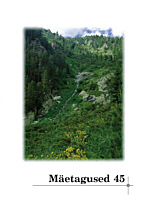Sissevaade eestlaste ravimtaimede tundmise mitmekesisusse
An Insight in the Diversity of Estonians’ Knowledge regarding Medicinal Plants
Author(s): Raivo Kalle, Renata SõukandSubject(s): Customs / Folklore
Published by: Eesti Kirjandusmuuseum
Keywords: Estonian herbal folklore; ethnobotany; local and global; medicinal plants; naming of the plants; transmission of knowledge
Summary/Abstract: The article probes the knowledge of Estonians in terms of medicinal plants, proceeding from the origin of the relevant knowledge. We have differentiated local and global knowledge. The concept of locality is closely related to indigenous plants and the knowledge thereof within the community. It is intrinsic of the local knowledge to combine two reciprocal criteria: first, the plant name is characteristic of a particular region (village, former parish, etc.), or, if there is no plant name, there is a recognisable description of the plant; secondly, unique and characteristic use of plants in a particular region. Global herbal folklore is associated with non-native and cultivated species, and can be recognised from among the relevant data according to the specific naming and intrinsic use of non-native plants, or by transferring the name and use of the alien plant to the local species, etc. In most cases, the introduced species do not have a folkloric name and are known only by way of the naming given by botanists. Pharmacies and chemist’s are the first major and recognisable institutions affecting herbal folklore, as the names of the sold drugs coincided with the names of species. The more thorough analysis focuses on how widespread in oral tradition is the name of the drug made of the roots of the wild rose. Likewise, diverse herbal knowledge has also been influenced by popular science books in Estonian, published for nearly 340 years, and is currently affected by the media and the relevant influential figures presented therein. A number of species, which used to be common, have become rare during recent decades and a similar tendency can also be noted in herbal folklore.
Journal: Mäetagused. Hüperajakiri
- Issue Year: 2010
- Issue No: 45
- Page Range: 78-94
- Page Count: 18
- Language: Estonian

